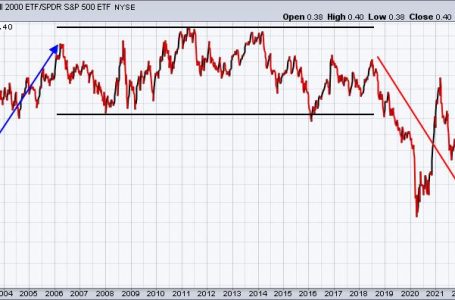Trump administration takes shape: President-elect completes top 15 Cabinet picks
The demographic dividend of the Philippines

(Part 1)
If the Philippine economy is one of the fastest growing, not only in the Indo-Pacific region but in the whole world, with a GDP averaging an annual growth rate of 6% to 7% during these hard times, a major factor is the so-called “demographic dividend” — our population is still young and growing, in stark contrast with most of our neighboring countries, especially Japan, South Korea, Singapore, and Taiwan, whose populations are both ageing and declining.
In fact, as famous global entrepreneur Elon Musk often points out, even China, despite its huge population, is very worried because the Chinese are ageing very fast, with the consequent pressure on its social security system and a shrinking labor force of young workers who can take care of the senior citizens. Everyone knows that this dire situation is a result of China’s one-child policy that was implemented, oftentimes with inhuman methods, by successive governments from 1980 to 2015. I am confident that Musk, who is one of the closest advisers to US President-elect Donald Trump, will say positive things about the Philippines to Mr. Trump about our young and growing population as a number one asset.
Thanks to a young and growing population (our median age is 25.7 years in 2024 as compared to 30 to 40 years among the ageing societies), some 20% of our GDP is derived from the more than 10 million workers who work abroad and send close to $40 billion in remittances home yearly and another 1.7 million (expected to balloon to 2.5 million in 2028) workers in the BPO-IT (business process outsourcing-information technology) sector that generates some $36 billion today and is expected to cross the $40 billion line in the next three years. Thanks to our young population, despite the very high rate of poverty at 16% of the population from which we suffer, the remaining Filipinos among the 116 million today who belong to the low middle-income and high middle-income households constitute a very strong domestic market base that powers the engine of growth of GDP, which is consumption.
Recently, however, there have been alarm signals ringing surrounding the report from the Philippine Statistics Authority (PSA) that the Philippine Total Fertility Rate (TFR) has declined to 1.9 babies per fertile woman, already below the replacement rate of 2.1. Are we about to lose our demographic dividend and follow in the footsteps of Thailand, notorious in development literature for being the first country in the world to suffer from ageing before becoming rich.
Thailand, thanks to its superb set of policies and programs promoting rural and agricultural development, has become a high middle-income economy with a $7,170 GDP per capita today as compared to our $3,900. It is still far, however, from being a high-income economy, which the World Bank sets at some $15,000 as a minimum in 2024 prices.
According to the World Bank, Thailand will see its working age population shrink by about 10% between 2010 and 2040. This would pose a serious threat to its still inadequate social security system. The ratio of working-aged to elderly people in 2022 was 3.4, but by 2040, officials forecast it could be as low as 1.7. Thailand, still a relatively poor country, is already headed towards becoming a “super-aged society” in which people over 60 years will account for more than 20% of the population. Its TFR today is 1.0 and this is happening long before reaching per capita incomes of $20,000 to $40,000, which rich countries like Spain and South Korea have already attained today. Thailand may soon have a TFR of below 1.0 like these two countries already have today. In fact, Reuters reported recently that Thailand is scrambling to encourage its people to have more babies, offering parents childcare and fertility centers, while tapping social media influencers to showcase the joys of family life.
What Thailand has in common with some of the countries in the Indo-Pacific region that are now suffering from the same predicament of very low fertility rates, like Singapore and China, is a very aggressive campaign by the State to limit births. In Thailand, encouraged by international agencies like the United Nations and the World Bank, a former politician and activist by the name of Mechai Viravaidya, waged a very aggressive campaign to spread a “condom culture” in the rural areas. He literally went around the countryside of Thailand distributing condoms (sometimes dropping them from a helicopter) and made popular the saying that “condoms should be as accessible as cabbages.” In Singapore, it was the “stop at two” campaign promoted by the authoritarian leadership of Lee Kuan Yew, who lived long enough to see the folly of birth control imposed above and spent the rest of his life trying to convince Singaporeans to have more children. As mentioned above, in China it was the one-child policy that prevailed for more than 30 years which today Chinese leaders are desperately trying to reverse.
Today top officials of our Commission on Population and Development (CPD) are claiming that the more widespread use of family planning methods (whether artificial or natural) mainly explains the drop of our fertility rate to less than the replacement rate of 2.1. Does this mean that we are going the way of Thailand in becoming a super-aged society before becoming rich (attaining a per capita income of at least of $15,000 in today’s prices)? Fortunately, the answer of an independent think tank, the ASEAN+3 Macroeconomic Research Office (AMRO) is a resounding “No.” Even if our TFR is already below replacement, we have a window of another 25 years or so during which our working-age population will continue to grow and to be young, reaching a peak in 2051. That will give us enough time (one whole generation) to continue strengthening our sound economic institutions and reforming our very imperfect political institutions so that in the coming two decades, our per capita income can rise to the high-income level required of a First World country. This is, of course, a challenge to the Z (or Centennial) generation, now in their twenties, to learn from both the good and bad examples of our leaders over the last 30 years, at least since the EDSA Revolution of 1986.
According to AMRO, the Philippine population is expected to be among the youngest in the region, with the country still in the early stage of its demographic transition as fertility rates remain relatively high and the number of working-age individuals seen to peak only by 2051. Despite a declining TFR, AMRO data showed the Philippines’ average population growth was still 1.8% as of 2021, the second fastest in the ASEAN region after Malaysia.
Out peak population — the year when the total population/share of working population is projected to reach the highest level — will be in 2092, the latest among the ASEAN member countries plus China, Hong Kong, South Korea, and Japan. Nearly all ASEAN+3 economies have seen their population’s peak, led by Japan in 2010, while China reached its peak in 2021. Thailand will be the first in the ASEAN to reach it population peak — projected around 2030 — while economies like Lao PDR and the Philippines are not expected to see their populations decline in the next 40 years.
The report also showed that the Philippines had the third-fastest average growth in the working age population at 2.27%, behind Malaysia (2.41%) and Laos (2.39%). Working age population refers to those aged 15 to 64.
Needless to say, all this positive data would be for naught if there is no concerted effort among Government, the business sector, and civil society to improve the quality of basic education and to constantly upskill, reskill and retool all those of working age — to make them employable first and foremost in the domestic economy, and for a small fraction of them in the global economy as OFWs. The developed countries all over the world that have committed “demographic suicide” will have no alternative but to depend on the Philippines to supplement their shrinking labor force, especially in healthcare, tourism, and IT.
(To be continued.)
Bernardo M. Villegas has a Ph.D. in Economics from Harvard, is professor emeritus at the University of Asia and the Pacific, and a visiting professor at the IESE Business School in Barcelona, Spain. He was a member of the 1986 Constitutional Commission.










